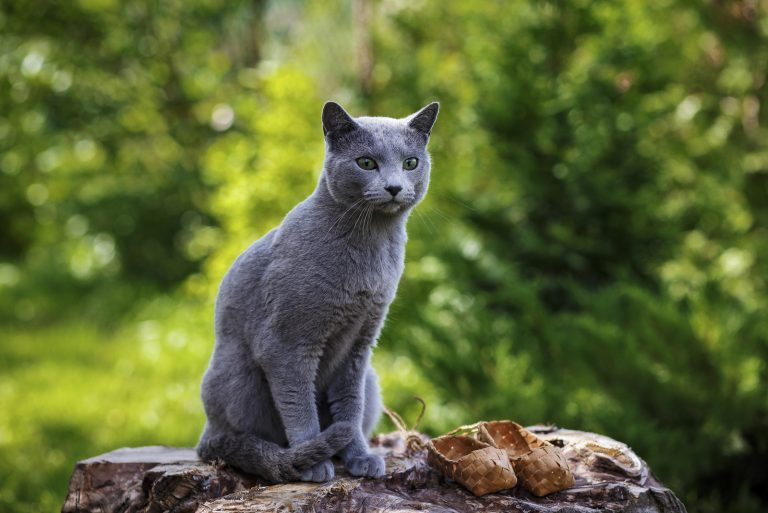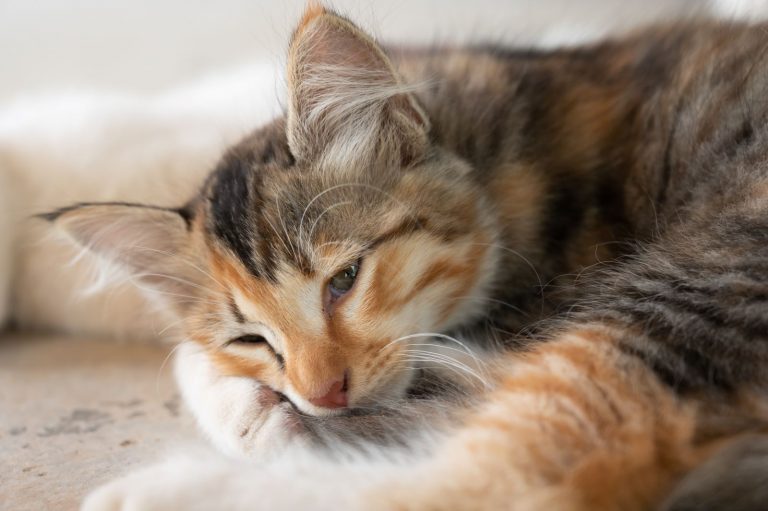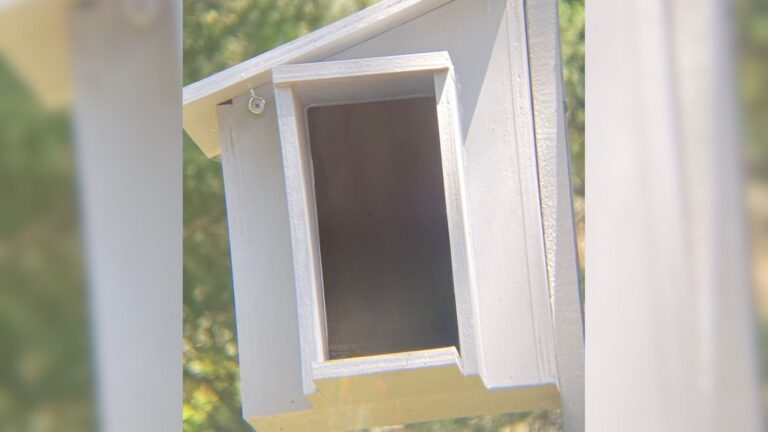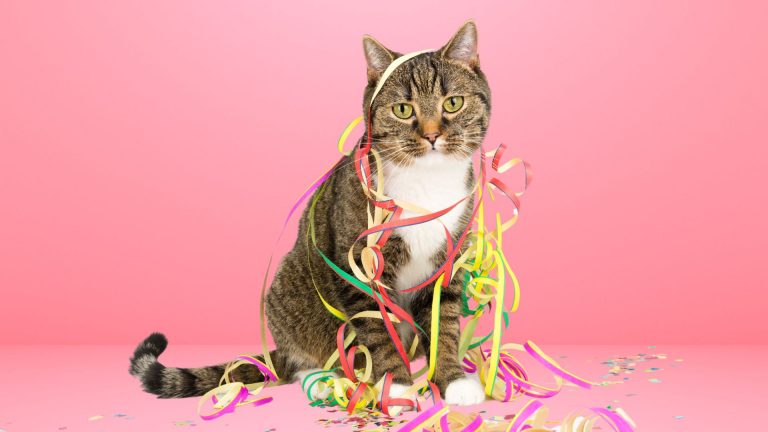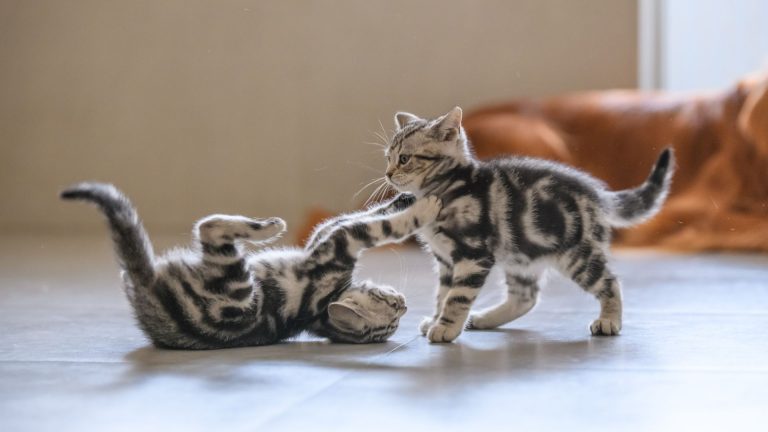Tabby Vs Bengal Cat: Differences And Similarities (With Pictures)
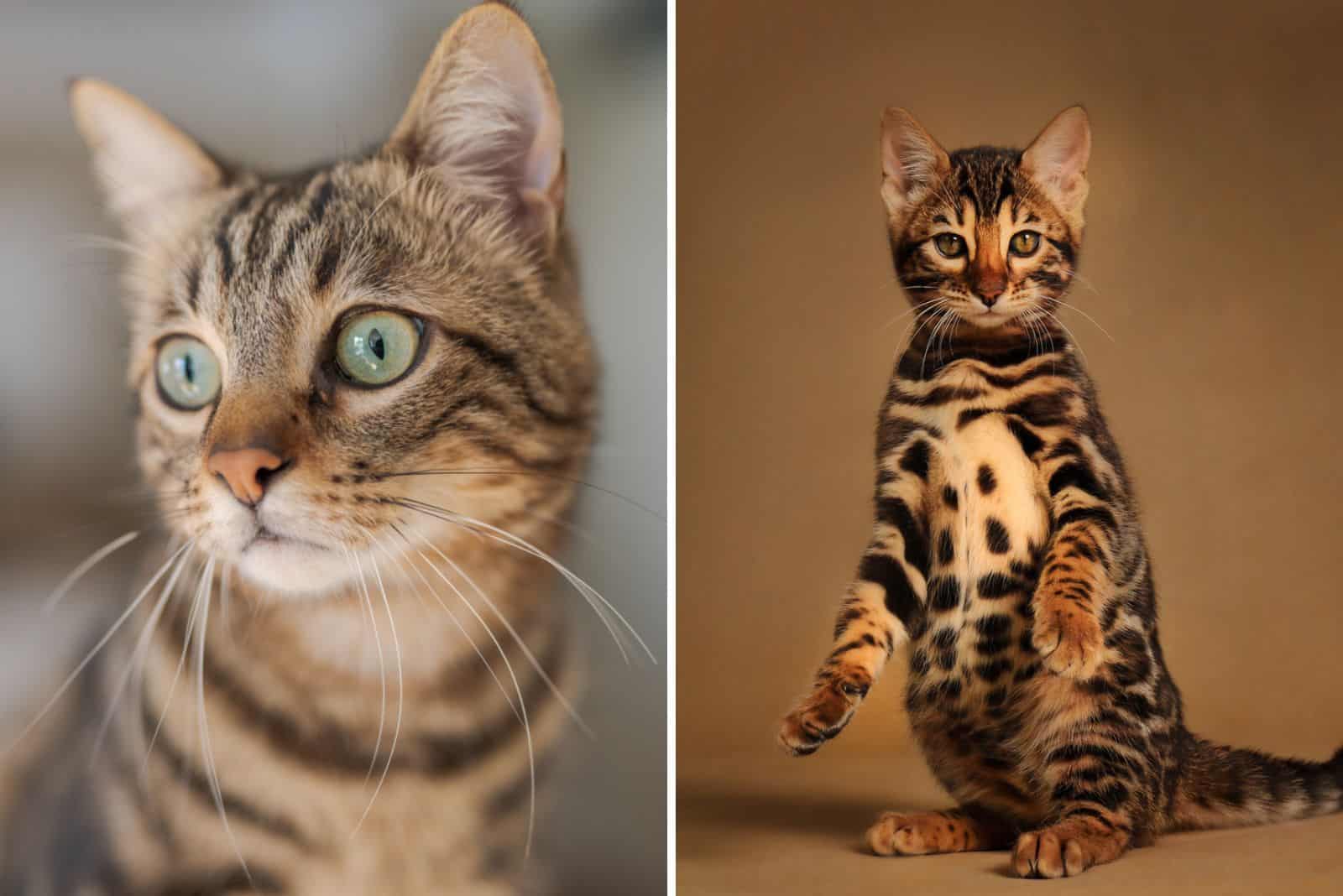
A lot of cat lovers want to know more about certain cat breeds, such as which cat breeds can have which pattern, and things like that.
Just as all Siamese cats have blue eyes, all Bengal cats, whether Bengal mixes or purebred Bengals, have some kind of spotted markings on their fur. Those are common facts, but what about other cats with spotted or mottled markings?
Let’s investigate tabby vs Bengal cats?
Bengal cats can be tabbies, but tabbies are not exclusively Bengal. Because tabby is a coat pattern that many cats might inherit, many cat breeds can be tabby cats. A Bengal cat, on the other hand, is a specific breed.
Let’s compare them side by side, so we can understand tabby vs Bengal cats, their differences and similarities much better.
Comparison Overview: Tabby Vs Bengal Cat
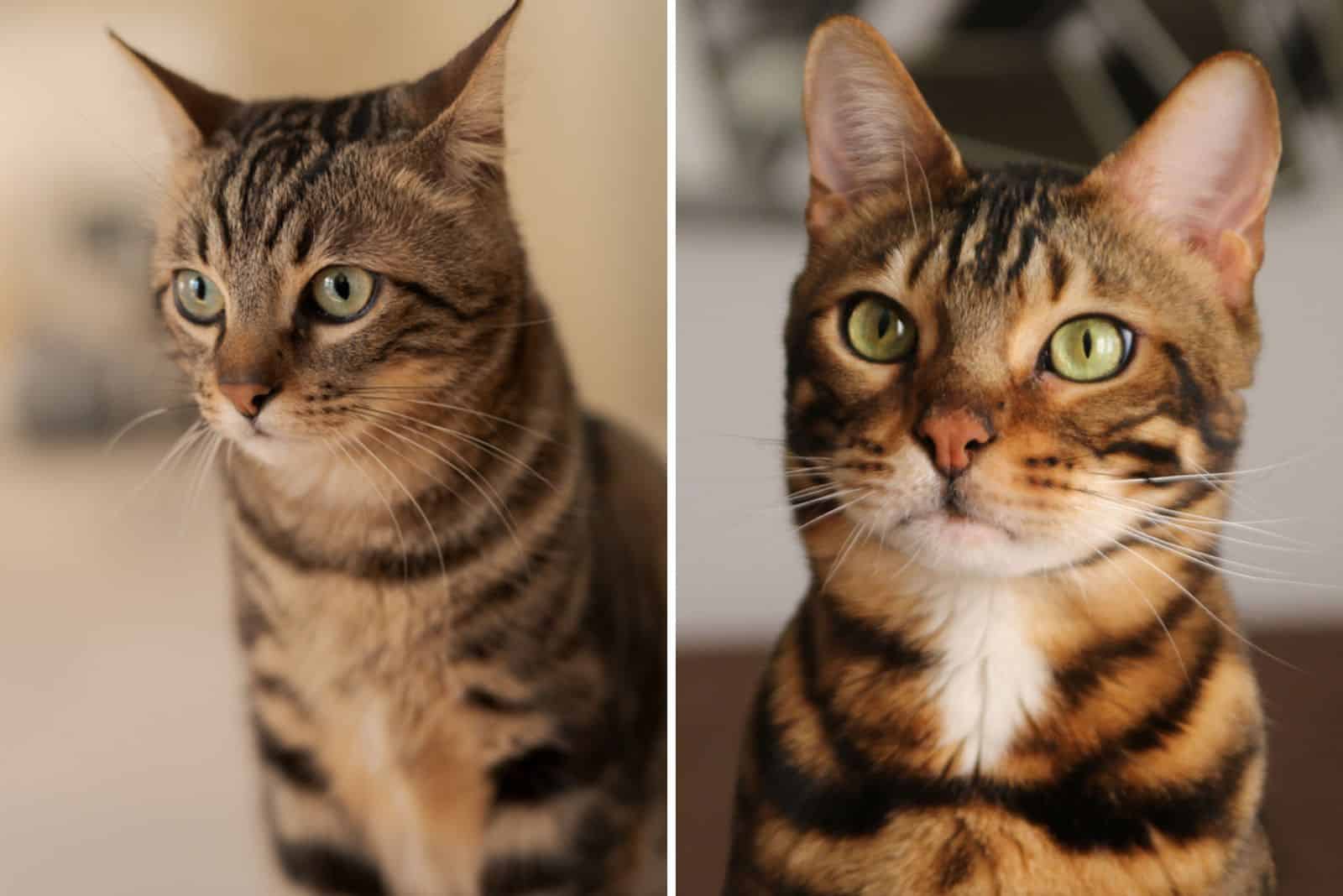
[table id=244 /]
About The Bengal Cat
Bengal cats are big and energetic, with large, thick tails and a wild-like appearance that resembles their Asian Leopard cat ancestors. This wild nature means Bengal cats usually prefer the outdoors to the indoors.
They love to exercise, climb, and run outside and are as energetic inside as well. Affection and loyalty are also their key attributes, which makes Bengals terrific pets for any type of family.
Origin
Even though there were hybrids of domestic cats and Asian leopard cats before, the breed category wasn’t recognized until the mid-twentieth century.
According to the CFA records, breeder Jean Mill initially mixed the two breeds of cat, which the CFA recognized and registered as the Bengal cat breed in 1996.
It’s no wonder that these cats, with their friendly, clever temperaments, and amazing coat patterns and colors, have become one of the world’s most popular cat breeds, even overtaking the popularity of cat breeds that were around long before them.
Appearance
Bengal cats typically weigh from eight to sixteen pounds, and they’re highly valued for their thick, short coats that are strikingly patterned and can come in various colors such as white, gray, and brown.
Their fur is incredibly soft; it feels like rabbit fur. The Bengal cat’s coat is what separates it from other domestic cat breeds. They are the only domestic cat breed with rosette patterns, indicating their wild origin.
Other common patterns for these cats include marbled tabby or spotted coats. All these patterns were first produced by whirling, blotched tabby lines. The TICA, therefore, gave the marbled Bengals championship title in 1993.
However, the breed was not officially acknowledged by the International Cat Association (TICA) until 1983, and the Cat Fanciers’ Association (CFA) did not acknowledge it until 2016.
Bengal cats weigh almost the same as other domestic cats, but they tend to have longer bodies, which makes them larger than average.
Thanks to their long legs, they are superb jumpers, so be prepared to find your Bengal up on the high shelves or on top of your wardrobe!
Personality Traits

A Bengal cat, no matter how wild it appears on the outside, is actually very lovely and gentle inside. Bengals cats are sociable, friendly, and affectionate toward anyone, but they might pick one human to be their favorite.
These cats get along well with kids, other cats, and pet dogs. However, this requires socialization from an early age. There might be some difficulties when introducing your Bengal cat to a new pet so do it gradually.
Bengal cats require continual stimulus to keep their curiosity satisfied. They love to play with different toys but are also known to play around with faucets, so don’t be surprised if you find your Bengal lurking around the tub.
Exercise Requirements
Bengal cats are happiest when their owners are around. However, they do need a lot of entertainment and places to climb. You should own at least one cat tree to keep your Bengal cat content, with many toys and hiding spots too.
Your Bengal needs to be entertained while you’re not at home, and if you spend a lot of time out every day, consider getting another cat to keep your Bengal cat company.
Bengals cats have a strong hunting instinct, so they love to observe squirrels, birds, and other visitors, through the window. Consider putting a perch or a cat bed on the window sill or somewhere your cat will have a comfy watching point.
Remember that this breed is extremely nimble, so your cat will inevitably investigate every high-up location it can reach. Be sure to put any fragile objects or ornaments somewhere safely out of reach.
Besides all their activity and energy levels, Bengals will also crawl up and snuggle next to you after their busy day.
Training & Grooming

To keep your Bengal cat happy, mental stimulation is essential. Have your Bengal kitten socialized from early on, and introduce new people of all ages as well as other pets. Let your Bengal get acquainted with the car, vacuum cleaner, and other ‘scary’ everyday things.
Bengal cats will benefit from a variety of experiences due to their intelligence, so it’s important you spend time with your Bengal from the start. In order to keep your Bengal cat entertained, supply many cat toys and switch them every other week.
Bengal cats are also easily trained, and they can even be walked on a leash. They’re also vocal with their owners and will communicate anything they need.
Your Bengal will probably greet you at the door and talk, or better yet, meow and chirp to you after a hard day’s work since they’re also quite vocal when necessary.
As far as grooming is concerned, Bengals are considered low-maintenance cats since their coats are short. They should only be brushed once a week to get rid of any dead hair or dead skin cells.
Health
Bengal cats have an average lifetime of 9 to 15 years and are generally very healthy. But, as it is with other cat breeds, there are a couple of health risks owners should be aware of when adopting a Bengal cat.
Reputable and registered breeders take care to produce and raise cats that are free of hereditary issues, but some hereditary conditions can happen in the cat’s later years.
The following are the most prevalent health problems in Bengal cats:
• HCM – hypertrophic cardiomyopathy is a heart disease that causes the muscles of the heart to swell, which happens more in elderly cats. It can also lead to complications with blood clots or heart failure, as well as a reduced life expectancy.
• Anesthetic Allergies – Bengal cats can be particularly sensitive to anesthetics, so in case they need to have surgery, it is crucial to monitor them closely. Anesthetic allergic responses might cause cardiac arrest in cats.
• PRA – progressive retinal atrophy is another medical condition that Bengal cats are prone to. It’s a condition that causes retinal degradation and can eventually lead to blindness.
About The Tabby Cat

Mostly, people associate the word tabby specifically with a small tiger-looking cat with wild-like stripes. Tabbies are commonly considered a specific breed of cat.
However, this distinctive coat pattern exists in many cat breeds;it is a pattern and not a breed.
Tabby patterned cats can be gray, brown, black, or red, with dots, stripes, lines, and spirals. It’s no wonder that tabby cats are so common; the tabby pattern gene can be detected in all domestic cat breeds.
Because there are so many distinct varieties, these wild-patterned cats differ in size and temperament, but tabby fans believe that they tend to be sociable, inquisitive, and outgoing.
Origin
There are beliefs that tabby cats descended from the Mau, the ancient cat breed from Egypt (whose most similar cat breed today is the Egyptian Mau), which was bred by domesticating an African wild cat.
However, the most distinguishing treat tabby cats possess is the ‘M’ marking on their foreheads. According to a biblical tale, a tabby visited the cradle of baby Jesus.
A small tabby cat curled next to the infant with comforting warmth and purred when Mary urged animals from the stable to encircle the cradle and warm the baby. Mary was so thankful that she inscribed the first letter of her name, the letter “M,” on the cat’s head.
In another story, according to Islamic mythology, Mohammed adored cats. He once chopped off a sleeve of his clothing rather than wake his cat, Muezza, that was napping on it when he had to go to attend the prayer.
According to these traditions, Mohammed gave the “M” insignia to tabbies to indicate his affection. Cats are still largely cherished and appreciated in most Islamic societies today, and they are even allowed inside mosques.
In the past centuries, the term “tabby” was an English term for striped silk cloth. Then, in the 1690s, it was initially used to identify striped cats.
Appearance
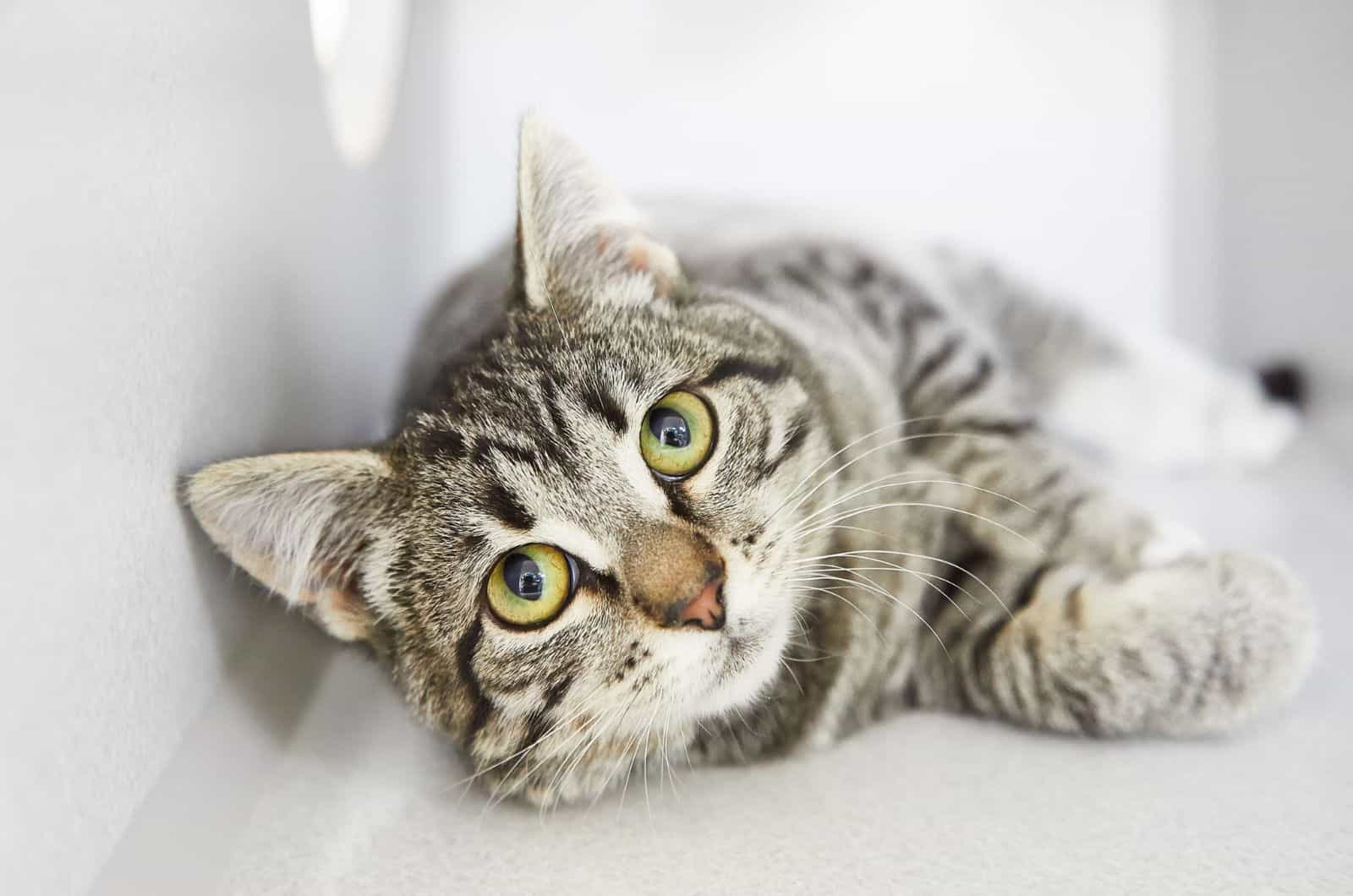
Tabby cats differ in breed and, therefore, in size and body shape. The tabby pattern is accepted in four primary patterns, which are:
• Classic – the classic tabby pattern typically features whorls that end in kind of a ‘target’ on the cat’s one side. American Shorthair cats mostly have this type of coat pattern.
• Agouti pattern – an agouti or ticked pattern is present in the majority of tabby cats. When you take a closer look at a cat’s coat with this pattern, you will notice distinct lines of color running down the cat’s fur.
The diversity of colors makes the cats who have an all-ticked coat pattern look like they’re shimmering in the sun.
• Mackerel – the striped or mackerel coat pattern is the most prevalent one, so much so that some folks believe this should have been the classic tabby pattern.
Mackerel tabbies have legs and tails covered in striped ring shapes, and the markings around the neck resemble a necklace. Solid or broken stripes go all through the cat’s sides, with darker patches typically over the cat’s stomach.
• Spotted – the best example of the spotted tabby pattern can be seen in the American Bobtail or an Ocicat. This pattern covers the cat’s body all over in spots.
And when tabby markings occur in tortie or calico cats, this is also a recognized pattern known as torbie or caliby.
Personality Traits
Cat owners who have tabby cats will agree that their beloved house cat is clever, energetic, and affectionate. Many people think that tabby cats are a unique breed of cat which is much more sociable than other cats.
They’re recognized for their curiosity and urge to explore, which is aided by their high energy levels! These cats behave better when they are given some outdoor time, where they can explore and tire themselves.
Then when they’re at home, all tired out, they’ll come to cuddle you and display the other side of their temperament, i.e. the affectionate and loyal house cat.
Exercise, Training & Grooming
A tabby cat’s care will mostly be determined by which breed it is, as there are different types of coats in the tabby pattern.
For example, a tabby American Shorthair will require much less coat maintenance than a tabby Maine Coon cat. When it comes to exercise and activity levels, you’ll need far more space for an Ocicat tabby than a tabby Manx cat.
Health
Tabby mixes are typically healthy and strong, but some pure breeds with tabby markings are prone to distinct health issues that need to be treated individually.
Final Comparison: Tabby Vs Bengal Cat
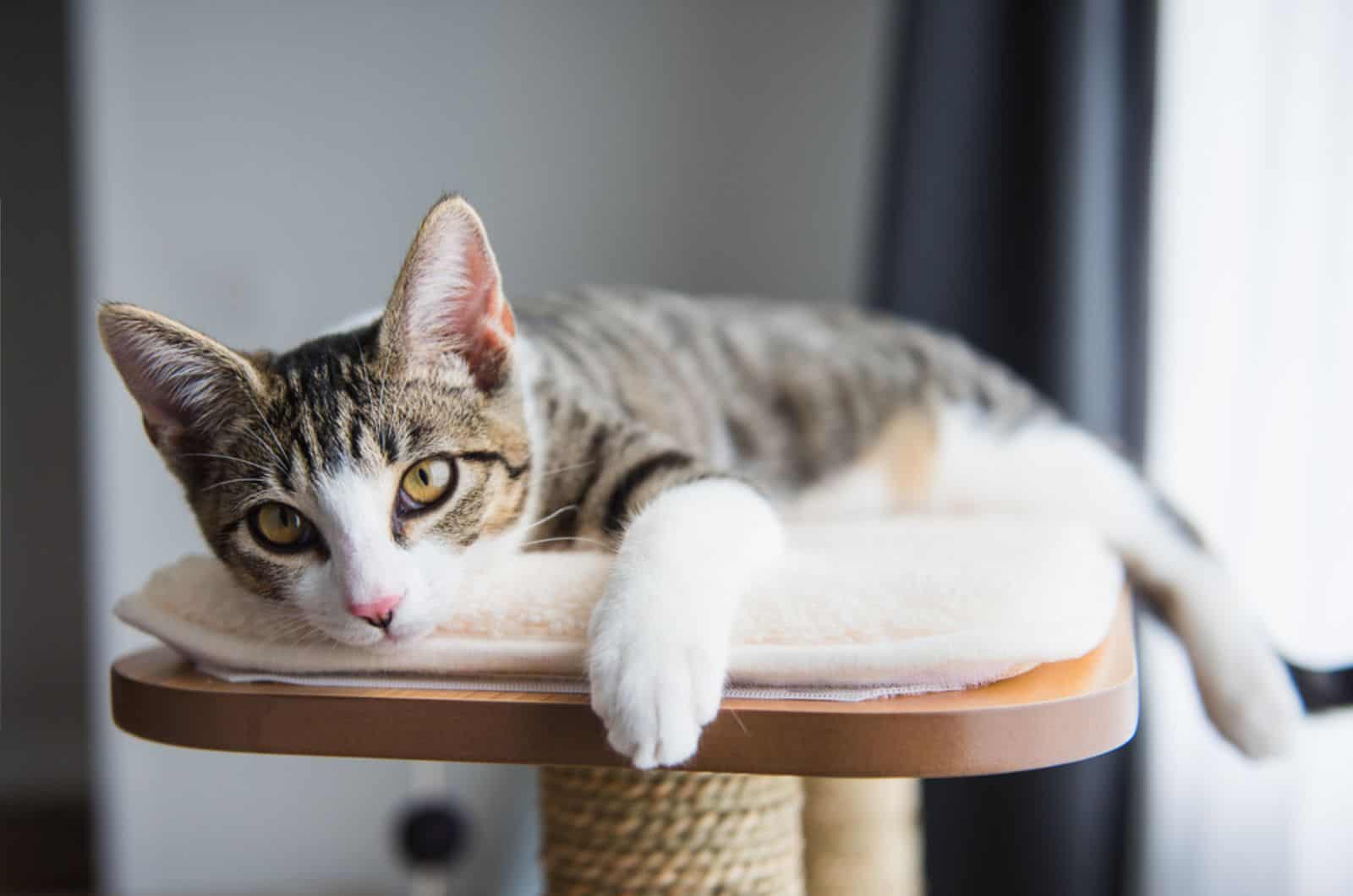
Even though numerous cat breeds have tabby coat colors and patterns and similar traits, when it comes to tabby vs Bengal cats, there are many differences.
Bengal cats are distinguished by their leopard-like spotted coats, they have a robust and slender body shape, and their back legs are a bit longer than their front legs.
Tabby cats are most well-known for the distinctive ‘M’ marking on the forehead, as well as stripes over their body, legs, and face.
For the sake of this comparison, I’ll compare a classic tabby domestic shorthair with the Bengal cat since tabby cats include many cat breeds.
Differences In Size
Adult Bengal cats weigh 8 to 16 lbs on average and stand up to sixteen inches tall. Shorthair tabbies weigh anywhere from 6 to 14 pounds (again because tabbies can be many different cat breeds).
The Bengal breed is often the taller one when compared to average tabby cats, and even though their weight is mostly equal, some tabbies weigh far less than the average Bengal cat.
Coats, Coats, Coats
Some people ask themselves, ‘Is my cat a Bengal tabby?’ Even though Bengal cats are essentially a kind of tabby cat, they have more coat variances than the normal tabby. Bengal cats have stringent breed criteria for coat patterns and colors.
They’re well-known for their thick, smooth, short coats, which can come in the following tabby patterns: rosette or spotted tabby pattern, tabby marble pattern, and snow tabby, i.e. lynx point Bengals.
Tabby cats are fuzzier and available in a variety of colors and coat types, including shorthair (e.g. British Shorthair), and longhair (e.g. Maine Coon). Tabby cats can have a broad range of coat colors and patterns.
Different Body Shape
Bengal cats are known for their long, silky coats, athletic bodies, long legs, and lively nature. As a result, they do exceptionally well in sprinting, leaping, and climbing.
Tabby cats are not as silky and athletic as Bengal cats, and they are often shorter and stockier in appearance. Some Tabbys will be smaller than Bengals cats.
Who’s Got A Nicer Personality?
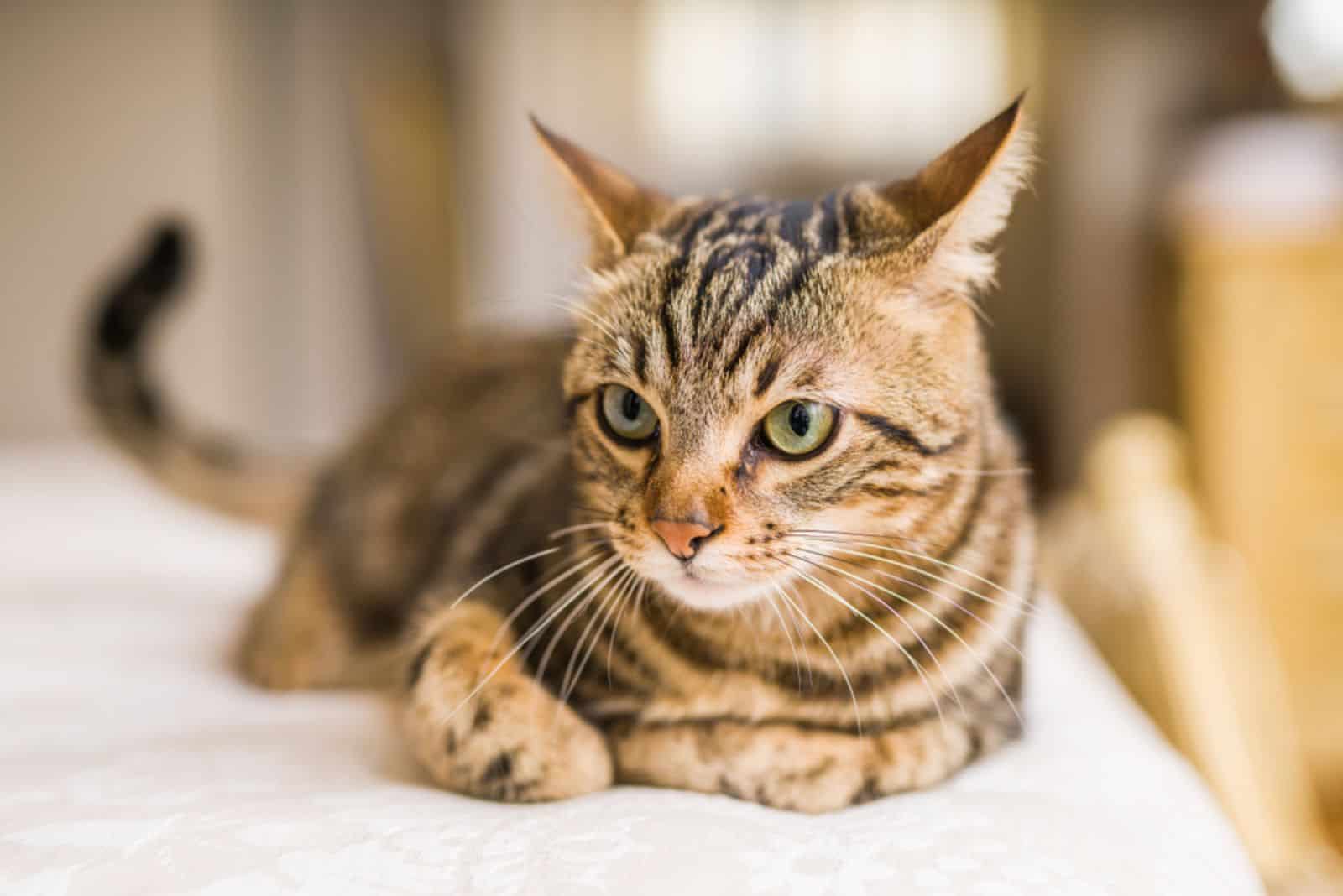
The Bengal cat breed’s attitude is renowned for being curious and lively, and there is never a boring time when they are around! These cats love playing, climbing, and exploring.
It is recommended that you provide your Bengal cat with lots of climbing opportunities and toys. This will keep them occupied and reduce the likelihood of them getting into trouble.
Because there are so many various types of Tabby cats, they have a diverse variety of personality qualities. However, most Tabby cats are very amiable and make excellent family companions.
Training A Tabby Vs Bengal
Bengal cats are well-known for being incredibly trainable, and many owners describe their Bengals as dog-like because it is so easy to train them. Many owners have taught their pet Bengals some simple skills, litter box use, and also to be walked on a leash.
Taking your Bengal cat out for a walk also helps them release some of their energy. Tabby cats are also considered to be quite intelligent, but their trainability varies since all cats are unique.
Grooming & Care Differences
Bengal cats require less maintenance than tabby cats when it comes to grooming. Tabby cats require more attention, particularly if they’re long-haired.
Both tabby and Bengal cats are playful and energetic, but Bengals have more energy than a typical tabby cat. Both of them require adequate daily activity, but tabbies might need more encouragement to play.
Bengal cats, on the other hand, will initiate playtime on their own and love to play either alone or with you.
Tabby Vs Bengal: Who’s A Better Pet?
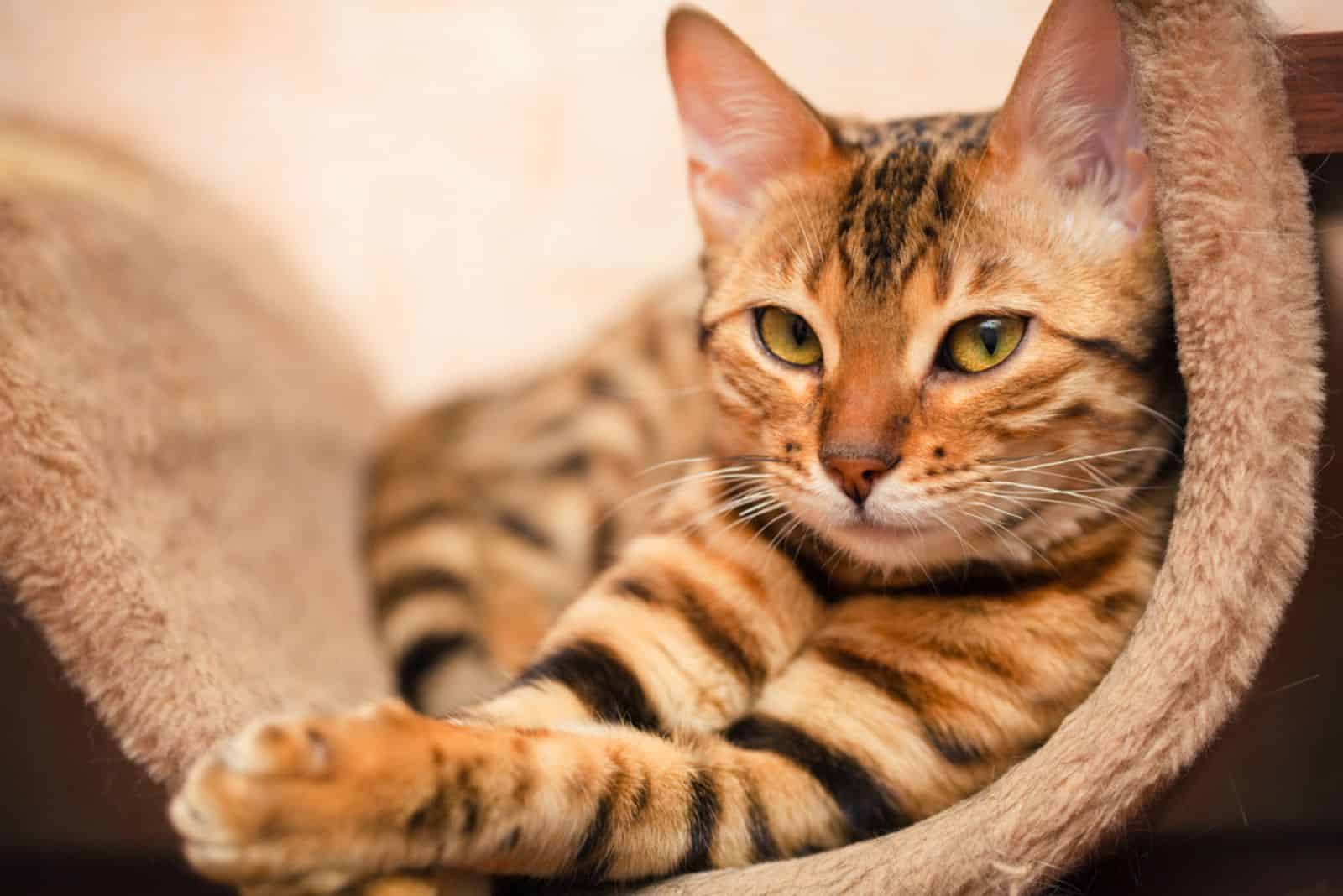
Bengal cats and tabby cats are both good with families and other pets. Bengal cats enjoy being around humans and other house pets, and what they love the most is having another Bengal cat as a playmate.
Bengals crave all the attention they can get from their owners, so the more time you can devote to them, the better. Spending time with your Bengal cat keeps them occupied and out of mischief, especially since they are known to love water.
Bengals are ideal for people who have lots of free time they can spend playing. Bengals are also suitable for active households where there are plenty of opportunities for playtime, sniffing around, and blowing off steam.
Tabby cats are, however, more adaptable and they’re better suited for ordinary individuals or households. They’re typically more loving and lower-maintenance than Bengal cats.
A tabby cat will fit perfectly into any cat-friendly home since they get along well with kids and are suitable for people of all ages, and are extremely friendly to other pets, which makes them excellent pet material.
Final Words On Tabby Vs Bengal Cats
Once again, Bengal cats are a breed of cat, and tabby cats can be one of many breeds since tabby is simply a coat pattern. Many cats can have a tabby pattern, including Bengal cats, but Bengals can have other pattern varieties as well.
Bengal cats are often bigger than most tabby cats, and they mostly have spots on their coats, which most other tabbies don’t inherit. Bengals are more athletic-looking and more energetic, whereas tabby cats are more cuddly and calm.
Both of them can be trained, and they both require daily playtime. Tabby cats require more grooming maintenance on average than Bengals, but they’re both equally good as family pets.
It only depends on what kind of family it is; if you have less spare time, your Bengal will probably need another cat to keep them company, while a tabby is more adaptable.
All in all, it’s safe to say that any home is a happier one with a cat, be it a Bengal or a classic tabby house cat.
Related Articles:
• How To Discipline A Bengal Cat – 8 Steps
• Gray Tabby Cat – Interesting Facts About These Beauties
• Are Bengal Cats Hypoallergenic? Here’s What You Need To Know
Like this post? Share or pin it for later!


